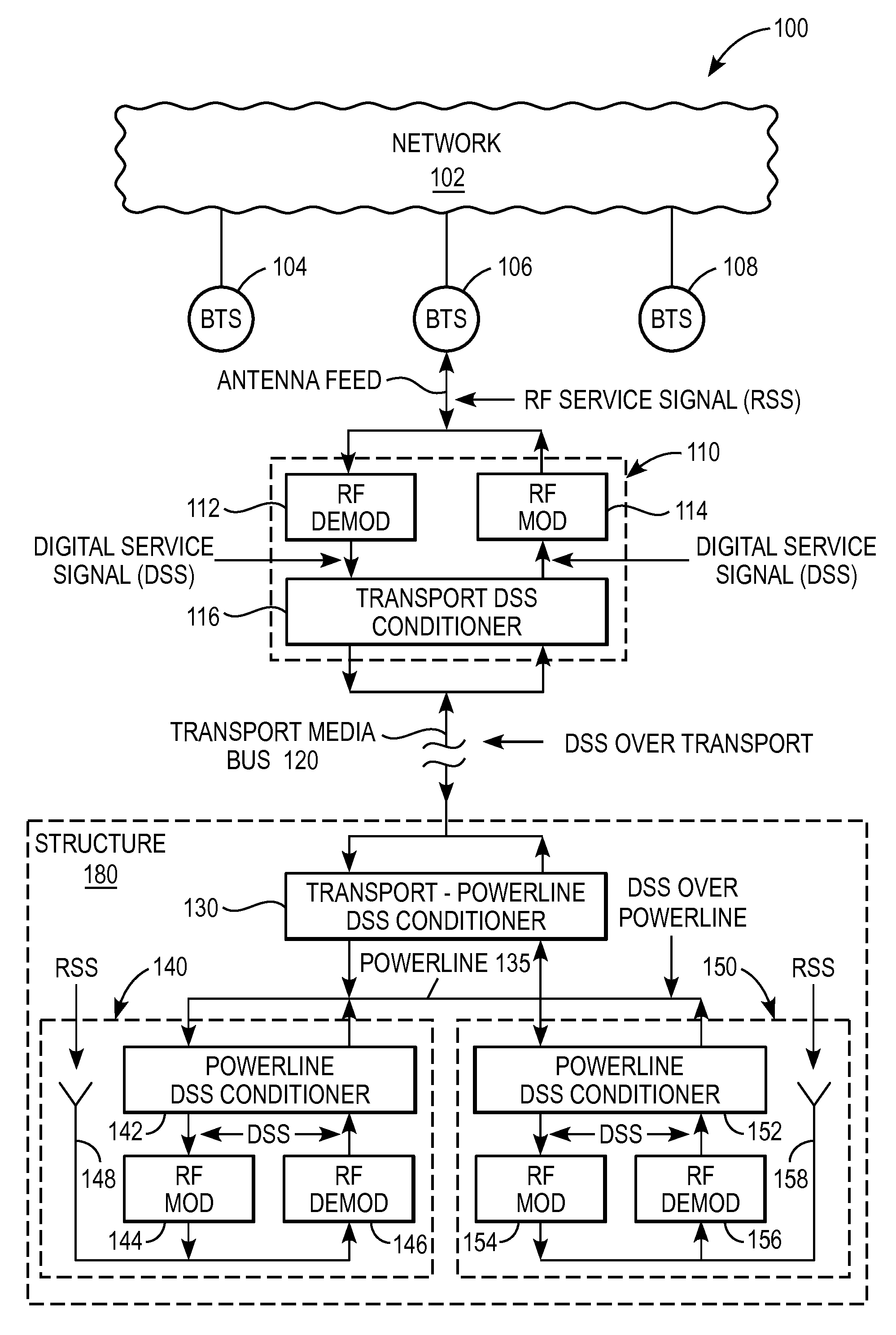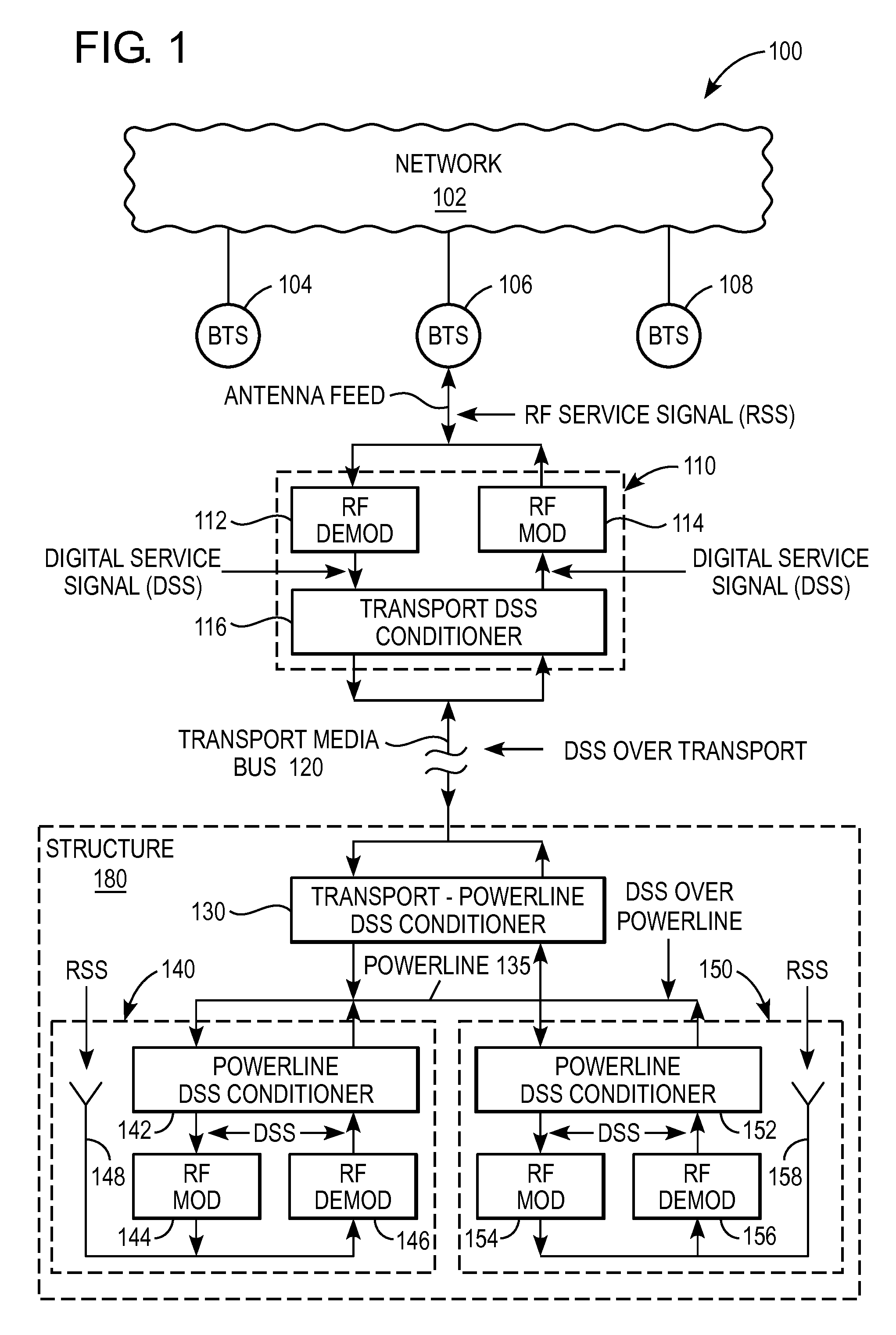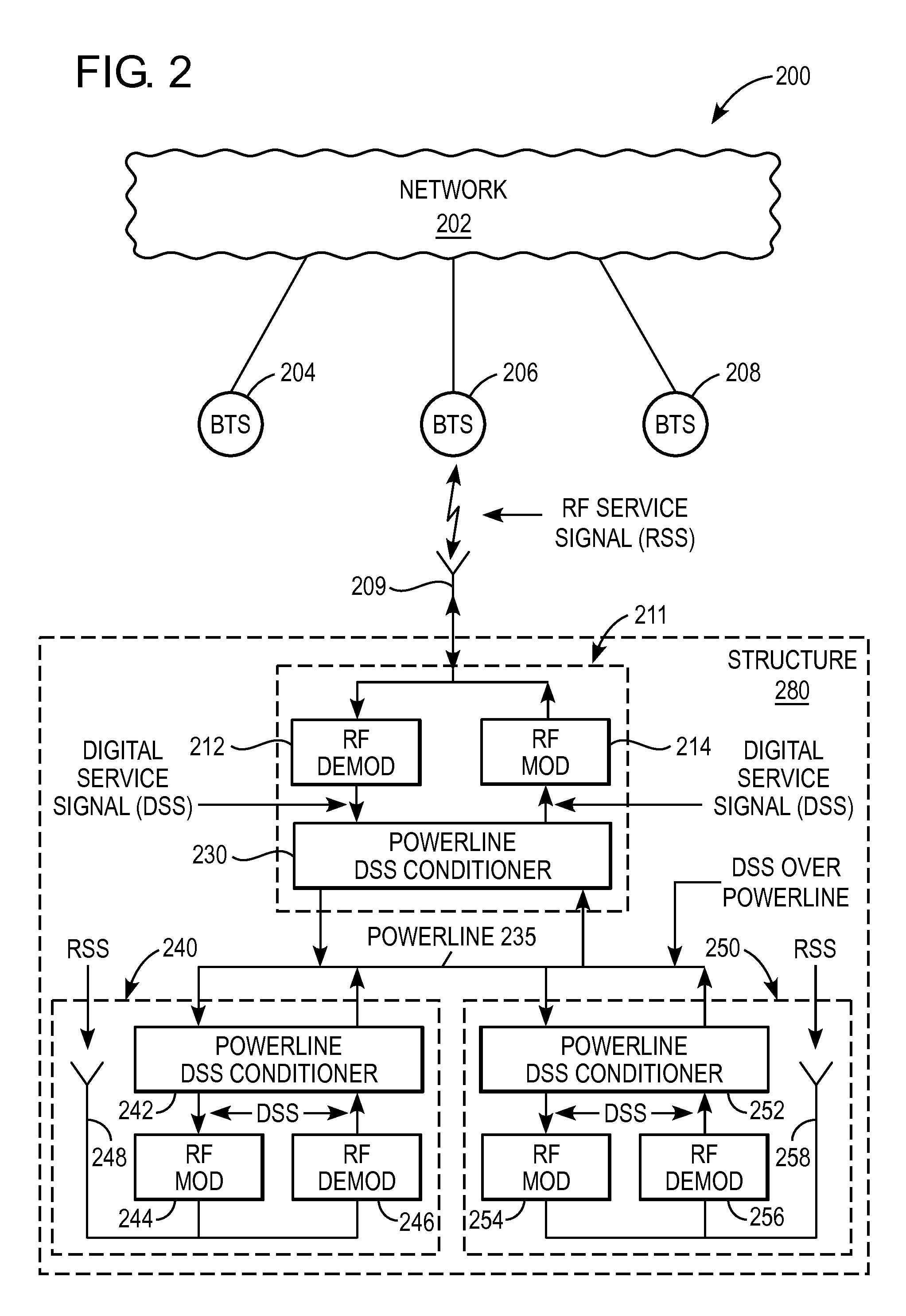System and method for transmitting wireless digital service signals via power transmission lines
- Summary
- Abstract
- Description
- Claims
- Application Information
AI Technical Summary
Benefits of technology
Problems solved by technology
Method used
Image
Examples
Embodiment Construction
FIG. 1 illustrates a block diagram of an exemplary communication system 100 in accordance with an embodiment of the invention. The communication system 100 is particularly suited for improving the wireless coverage inside a structure 180, such as a building, dwelling, residence, tunnel, subway, or other structure defining an interior region for improved wireless coverage. The communication system 100 can be broken down into three subsystems, a network-side subsystem, a structure-side subsystem, and a communication medium connecting the network-side subsystem to the structure-side subsystem.
More specifically, on the network-side, the communication system 100 comprises a network 102, a plurality of base transceiver stations (BTS) 104, 106, and 108 coupled to the network 102, and a signal conditioner 110 connected to the BTS 106. It shall be understood that other similar signal conditioners may be connected to BTS 104 and 108, respectively. Also, one or more BTS may be connected to sig...
PUM
 Login to View More
Login to View More Abstract
Description
Claims
Application Information
 Login to View More
Login to View More - R&D
- Intellectual Property
- Life Sciences
- Materials
- Tech Scout
- Unparalleled Data Quality
- Higher Quality Content
- 60% Fewer Hallucinations
Browse by: Latest US Patents, China's latest patents, Technical Efficacy Thesaurus, Application Domain, Technology Topic, Popular Technical Reports.
© 2025 PatSnap. All rights reserved.Legal|Privacy policy|Modern Slavery Act Transparency Statement|Sitemap|About US| Contact US: help@patsnap.com



